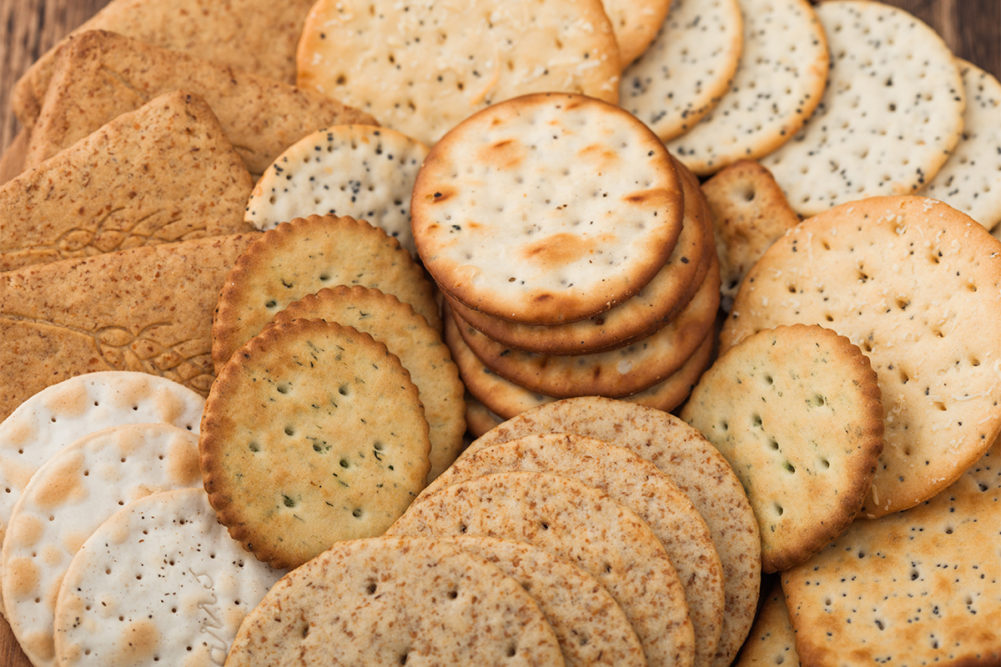When it comes to hot new crackers, the market seems to have an insatiable appetite for everything that’s ancient, upcycled or whole grain to plant-based options that contain no grains. However, automating these new-style products isn’t what it’s cracked up to be. They often need special attention just to get the dough from the mixer to the oven on many high-volume lines, noted experts in Baking & Snack’s November feature on cracker processing.
The difficulty in sheeting doughs without gluten requires the ability to create a product with enough strength to hold up through the process. Some doughs are extremely sticky because of the ingredients and the large amount of water needed to hydrate the grains in the dough. Additionally, non-wheat flour doughs will yield a harder, denser textured product that might not be as appealing to some consumers who expect a lighter, crispier one.
To combat that, bakers can add more fat to make a more tender cracker. However, if they’re trying to produce a healthier product, that might not be the best option. Another alternative involves adding modified starch to bind the grains and hold the dough together during the makeup process.
That’s why upcycled grains are so difficult to process. Often, they’re like sand with nothing to hold them together. With the right starch in the proper amount, bakers can yield everything from a crispy hard-biting cracker to a very tender one and anywhere in between.
In the end, it just takes a lot of trial and error, and a lot of patience, to satisfy consumers in this burgeoning market.






